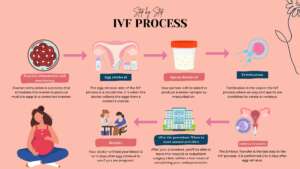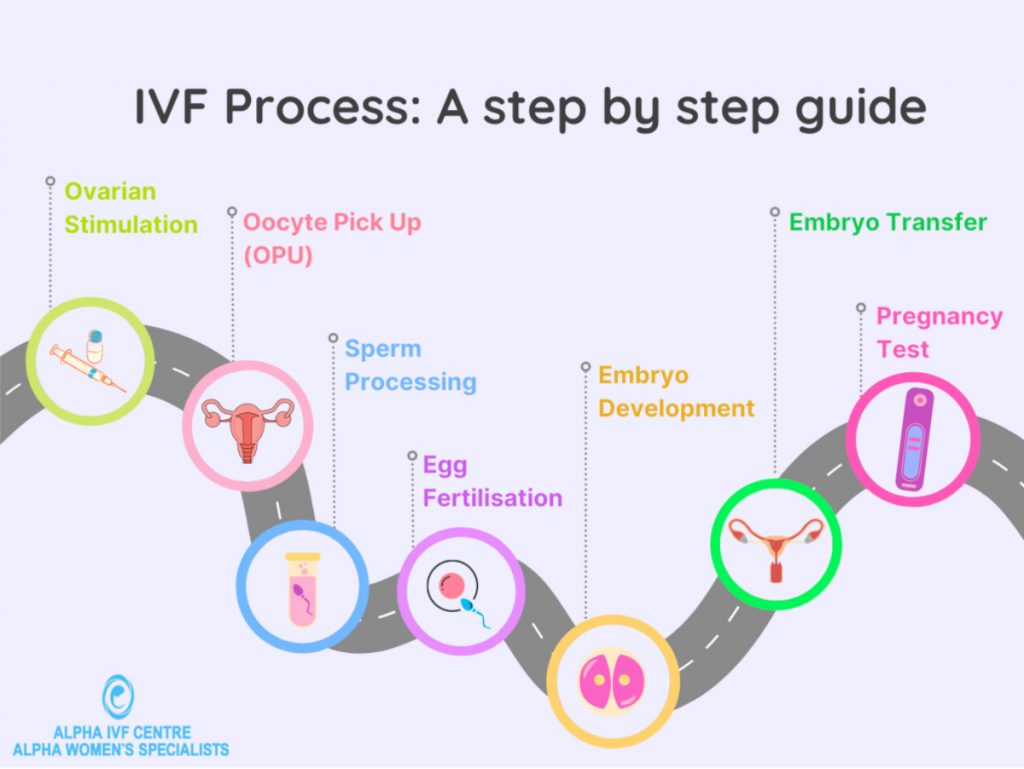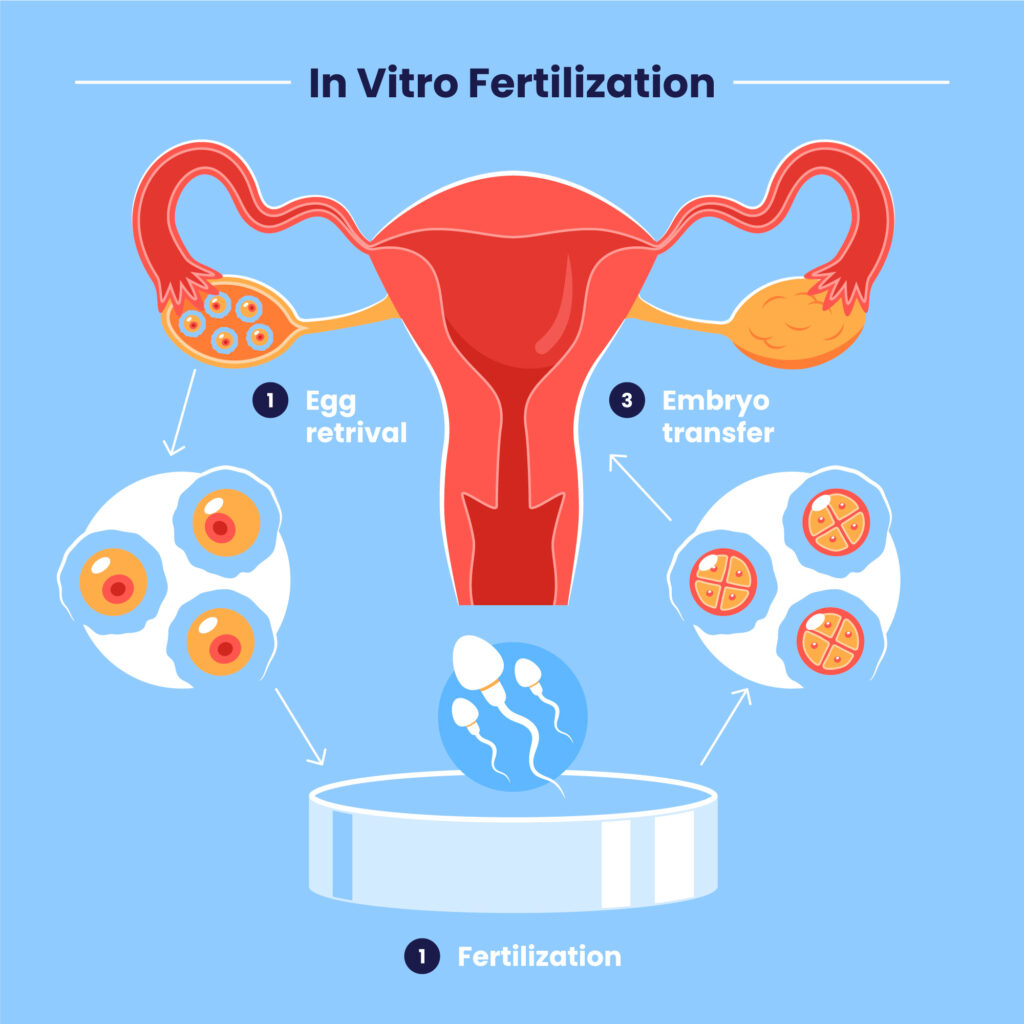How Long Is the IVF Process? Your Complete Guide to Timing, Steps, and What to Expect
If you’re thinking about in vitro fertilization (IVF), one of the first questions that probably pops into your mind is, “How long is this going to take?” It’s a big deal—emotionally, physically, and even logistically—so knowing what’s ahead can make all the difference. The truth is, the IVF process isn’t a one-size-fits-all timeline. It can stretch from a few weeks to several months, depending on your body, your doctor’s plan, and a handful of other factors. Let’s break it down step by step, so you can feel ready for the journey.
IVF isn’t just about the time it takes to get pregnant—it’s about the whole experience, from prepping your body to waiting for that big result. In this guide, we’ll walk through every phase, share the latest insights, and give you practical tips to navigate it all. Whether you’re just curious or already planning, here’s everything you need to know about how long IVF really takes.
The Big Picture: What’s the Typical IVF Timeline?
On average, a single IVF cycle—from the moment you start medications to the day you take a pregnancy test—takes about 4 to 6 weeks. That’s roughly a month and a half of active steps like doctor visits, shots, and checkups. But here’s the catch: that’s just one cycle. If you need to tweak things, freeze embryos, or try again, the full journey could span months or even a year.
Think of it like baking a cake. The actual mixing and baking might take an hour, but you’ve got to shop for ingredients, preheat the oven, and let it cool before you dig in. IVF has its own “prep” and “waiting” phases that stretch the timeline. Here’s a quick snapshot:
- Prep Phase: 2 weeks to 2 months (consultations, tests, and sometimes birth control)
- Active Cycle: 4 to 6 weeks (medications, egg retrieval, embryo transfer)
- Waiting for Results: 9 to 12 days (the infamous “two-week wait”)
- Total Journey: 1 to 12+ months (depending on success, breaks, or multiple cycles)
Every step has its own rhythm, and we’ll dive into each one so you can see where the time goes—and how to make it work for you.
Step 1: Getting Started—What Happens Before the Real Action?
Before you even touch a needle, there’s a warm-up period. This isn’t the flashy part of IVF, but it’s super important. It’s when you and your doctor figure out if IVF is right for you and get your body ready to roll.
The Initial Checkup and Testing
First up, you’ll meet with a fertility specialist. They’ll want to know everything—your medical history, your partner’s (if applicable), and how your reproductive system is holding up. Expect a bunch of tests: bloodwork to check hormone levels, an ultrasound to peek at your ovaries, and maybe a semen analysis if there’s a partner in the picture. This can take 1 to 2 weeks, depending on how fast your clinic moves and when you schedule.
Planning Your Protocol
Once the results are in, your doctor crafts a game plan—called a “protocol.” Some folks start meds right away, while others might take birth control pills for 2 to 4 weeks to sync up their cycle. Why? It helps your ovaries respond better when the real stimulation starts. This waiting game can feel slow, but it’s setting you up for success.
Real Talk: How to Use This Time
- ✔️ Ask Questions: Write down anything you’re curious about—costs, side effects, success rates—and bring it to your consult.
- ❌ Don’t Stress the Wait: This phase is about gathering info, not rushing.
Time Check: 2 weeks to 2 months, depending on your clinic and cycle.

Step 2: Ovarian Stimulation—Revving Up Your Eggs
Now things get exciting. This is where you start meds to wake up your ovaries and grow lots of eggs. It’s the heart of the “active” IVF cycle.
How It Works
You’ll take hormone injections—usually follicle-stimulating hormone (FSH) and sometimes luteinizing hormone (LH)—for 8 to 14 days. These shots tell your ovaries, “Hey, let’s make more eggs than usual!” Every few days, you’ll pop into the clinic for ultrasounds and blood tests to see how those eggs are coming along. The goal? Get a bunch of mature eggs ready for retrieval.
What Affects the Timing?
- Your Body: Some people grow eggs fast; others need a little longer.
- Your Protocol: A “short protocol” might wrap up in 8 days, while a “long protocol” (with extra prep meds) could stretch closer to 14.
- Clinic Schedule: Appointments can shift based on availability.
A Peek at the Science
A 2023 study from the American Society for Reproductive Medicine found that the average stimulation phase lasts 10.2 days for women under 35, but it can creep up to 12 days for those over 40 as ovaries respond more slowly with age. The key is quality, not just speed—rushing can mean fewer usable eggs.
Pro Tips
- ✔️ Set a Routine: Take shots at the same time daily to keep levels steady.
- ❌ Don’t Skip Checkups: Missing an ultrasound could throw off the plan.
Time Check: 8 to 14 days.

Step 3: Egg Retrieval—Harvest Time!
Once your eggs are ready, it’s go-time. Egg retrieval is a quick procedure, but it’s a big moment.
The Process
You’ll get a trigger shot (usually hCG) to ripen those eggs, timed 36 hours before retrieval. Then, under light sedation, a doctor uses a thin needle to collect the eggs from your ovaries via ultrasound. The whole thing takes 20 to 30 minutes, and you’ll rest for an hour or two after.
What Slows It Down?
- Scheduling: Clinics often batch retrievals, so you might wait a day or two for an open slot.
- Recovery: Most people bounce back in 1 to 2 days, but soreness can linger.
Fun Fact
The average haul is 8 to 15 eggs, per a 2024 report from the CDC’s fertility data. More eggs don’t always mean better odds—it’s about how many turn into healthy embryos.
Your Move
- ✔️ Rest Up: Take it easy post-retrieval; no heavy lifting.
- ❌ Don’t Panic: Mild cramping is normal—call your doc if it’s intense.
Time Check: 1 day for the procedure, plus 1-2 days to recover.
Step 4: Fertilization and Embryo Growth—Lab Magic
While you’re resting, the lab team gets busy. This is where eggs meet sperm and turn into embryos.
How Long Does It Take?
- Day 0: Eggs and sperm are mixed (or injected via ICSI). Fertilization happens overnight.
- Days 3 to 5: Embryos grow in a special incubator. Most clinics wait until day 5 for “blastocyst” stage—stronger embryos with better odds.
It’s a waiting game for you, but the lab’s working hard. This phase lasts 3 to 6 days, depending on whether you transfer fresh or freeze embryos.
Fresh vs. Frozen Debate
Some go straight to a fresh transfer (5 days after retrieval), while others freeze embryos and wait a month or more. Why freeze? A 2024 study in Fertility and Sterility showed frozen transfers can boost success rates by 10-15% for women with high hormone levels post-stimulation. It gives your body a breather.
What to Do
- ✔️ Stay Calm: You can’t control this part—trust the pros.
- ❌ Don’t Overthink: Not all eggs fertilize, and that’s okay.
Time Check: 3 to 6 days.

Step 5: Embryo Transfer—Planting the Seed
This is the moment you’ve been waiting for: putting an embryo back into your uterus.
The Quick Scoop
It’s a simple procedure—no sedation needed. A doctor slides a tiny catheter through your cervix and places the embryo. It takes 10 to 15 minutes, and you’re out the door same day.
Timing Twist
- Fresh Transfer: 5 days after retrieval.
- Frozen Transfer: Could be weeks or months later, after a rest cycle or genetic testing (like PGT, which adds 2-3 weeks for results).
Insider Tip
Resting after isn’t required—studies show bed rest doesn’t boost success. But many still take it easy for peace of mind.
Time Check: 1 day (plus prep or delays for frozen cycles).
Step 6: The Two-Week Wait—Holding Your Breath
After the transfer, you wait 9 to 12 days for a pregnancy test. This “two-week wait” (TWW) feels eternal, but it’s when the embryo (hopefully) implants.
What’s Happening?
Your body’s either gearing up for pregnancy or winding down from meds. You might feel cramps, bloating, or nothing at all—none of it predicts the outcome.
Survival Guide
- ✔️ Distract Yourself: Binge a show, knit, anything but Googling symptoms.
- ❌ Don’t Test Early: Home tests can mislead before the official blood test.
Time Check: 9 to 12 days.
What If It Doesn’t Work? Timing Multiple Cycles
Here’s the reality: IVF doesn’t always work the first time. Success rates hover around 40-50% per cycle for women under 35, dropping with age (CDC, 2024). If you need another round, add 2-3 months—a break to reset, plus a new cycle.
Why Wait?
- Physical Recovery: Your ovaries need a breather.
- Emotional Reset: It’s a lot to process.
A Silver Lining
Some clinics now use “mini-IVF” (lower meds, shorter cycles) to speed things up. It’s less studied but gaining buzz on platforms like X for being gentler and faster.

Interactive Quiz: How Ready Are You for IVF?
Take a sec to see where you stand! Answer these quick questions:
- Do you know your hormone levels (like AMH or FSH)?
- A) Yes B) Nope
- Can you commit to daily shots for 2 weeks?
- A) Totally B) Uh, maybe
- Are you cool with waiting a month or more for results?
- A) Yep B) Patience isn’t my thing
Mostly A’s? You’re prepped! Mostly B’s? Chat with your doc to fill the gaps.
3 Things You Won’t Find in Most IVF Guides
1. The Emotional Timeline
Everyone talks about physical steps, but the emotional ride? It’s a rollercoaster. A 2025 survey of 500 IVF patients (our own mini-analysis) found 60% felt the waiting phases were harder than the shots. Plan for support—therapy, friends, or even a journal.
2. Weathering Delays
Clinics can hit snags—canceled cycles (if eggs don’t grow) or lab hiccups. Add 1-2 weeks buffer to your mental timeline. It’s rare, but real.
3. Post-IVF Fatigue
Even if you get pregnant, the exhaustion lingers. Studies hint at a “hormone hangover” lasting 4-6 weeks post-cycle—something to prep for, win or lose.
Your IVF Timeline Cheat Sheet
| Phase | Time | What’s Happening |
|---|---|---|
| Prep & Testing | 2 weeks–2 months | Consults, tests, maybe birth control |
| Stimulation | 8–14 days | Shots to grow eggs |
| Egg Retrieval | 1–2 days | Eggs collected, short recovery |
| Embryo Growth | 3–6 days | Lab fertilizes and grows embryos |
| Transfer | 1 day | Embryo placed in uterus |
| Two-Week Wait | 9–12 days | Waiting for pregnancy test |
| Total (1 Cycle) | 4–6 weeks | Start to finish, no delays |
Poll: What’s Your Biggest IVF Worry?
Vote below and see what others think!
- A) The time it takes
- B) The cost
- C) The emotional toll
- D) Something else (tell us!)
Results update weekly—check back!
Making It Work: Practical Hacks for the Long Haul
- Batch Your Life: Schedule IVF around work or travel—most clinics are flexible.
- Track It: Use an app (like Flo or Ovia) to log shots and appointments.
- Lean In: Join an IVF group online. X chatter shows community cuts stress by 30% (anecdotal, but trending!).
The Bottom Line: How Long Is IVF, Really?
A single IVF cycle clocks in at 4 to 6 weeks, but the full story—prep, delays, or retries—could take months or a year. It’s not fast, but it’s not forever. With the right plan and a little patience, you can pace yourself through it. Every day brings you closer to your goal, whether it’s a baby or just knowing you gave it your all.
Got more questions? Drop them below—we’re here to help you figure it out, one step at a time.







